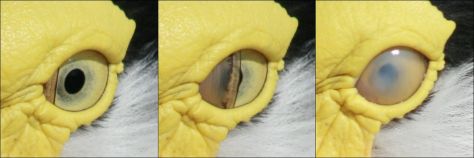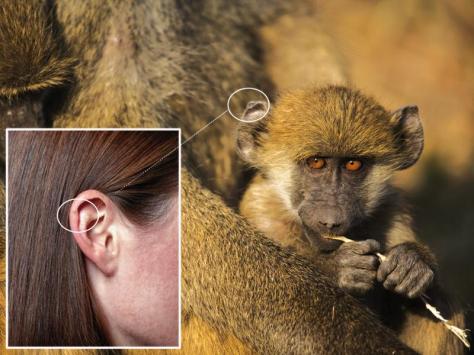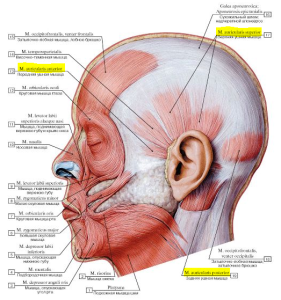42% of the US population and 11.5% of the Spanish people do not believe in evolution. However, there are different evidence that Darwin was right, some of them in your own body. Have you had your appendix or wisdom teeth removed? Find out in this post which vestigial organs you have inherited from your ancestors.
WHAT ARE VESTIGIAL STRUCTURES?
Vestigial structures (often called organs althouth they are not organs properly) are body parts that have been reduced or have lost its original function during the evolution of a species. They can be found in many animals, including humans.

Vestigial structures were fully functional in the ancestors of these species (and in the homologous structures of other existing species), but currently its function is practically useless or it has changed. For example, the second pair of flying wings in some insects such as flies have lost their function and they have been reduced to balance organs (halteres). If you want to know more about the evolution of flight in insects click here.
Besides physical structures, vestigial features can also manifest itself in behavior or biochemistry processes.
WHY ARE THEY EVIDENCE OF EVOLUTION?
Natural selection acts on species favoring features that increase their survival and eliminating the ones with no benefits, for example when changes appear in the habitat. Individuals with unfavorable characteristics will die or will breed less and that feature will be removed after some generations, while favorable traits will remain as their carriers can pass them to the next generation.
Sometimes there are features that are neither favorable nor unfavorable, so they continue appearing in the next generations. But all has a cost structure (energy, risk to become infected, develop tumors…), so selective pressure continues acting to eliminate something that is not conducive to the success of the species. This is the case of vestigial structures, which “take longer” disappear throughout evolution. Their existence reveal that in the past these structures had an important role in our ancestors.
FIND YOUR VESTIGIAL TRAITS
THE NICTITATING MEMBRANE
We talked about it in How animals see the world. The third eyelid is a transparent or translucent membrane that protects and moisten the eye without losing visibility. It is common in amphibians, reptiles and birds. Among primates, it is only functional in lemurs and lorises.

In humans the plica semilunaris is a remnant of the nictitating membrane. Obviously we can not move it but still has some lacrimal drainage function and helps on the eye movement (Dartt, 2006).

DARWIN’S TUBERCLE AND EAR MUSCLES
10% of the population has a thickening in the ear, a vestige of the common pointy ear in primates. This structure is called Darwin’s tubercle and has no function.


Also, primates (and other mammals) have mobile ears to lead the pinna toward the sound source: surely you have noticed it in your house dog or house cat. Humans (and chimps) no longer have that great mobility, although some people may move slightly pinna. It has been proven with electrodes these muscles are excited when we perceive a sound that comes from a particular direction (2002).

The occipitofrontalis muscle has lost its function to prevent the head from falling, but participates in facial expression.
PALMARIS LONGUS MUSCLE
16% of Caucasians do not have this muscle on the wrist, neither 31% of nigerian people neither 4,6% of chinese people. It can even appear in one arm and not in the other or be double.
It is believed that this muscle actively participated in the arboreal locomotion of our ancestors, but currently has no function, because it does not provide more grip strength. This muscle is longer in completely arboreal primates (like lemurs) and shorter in land primates, like gorillas (reference).
And do you have it or not? Try it: join your thumb and pinky and raise your hand slightly.

WISDOM TEETH
35% of people do not have wisdom teeth or third molar. In the rest, its appearance is usually painful and removal is necessary.

Our hominin ancestors had them, much bigger than ours. A recent research explains that when a tooth develops, emits signals that determine the size of the neighboring teeth. Reducing the mandible dentition and the other along evolution has resulted in reduced molars (and eventually the disappearance of the third).

THE TAILBONE
If you touch your spine till the end, you will reach the coccyx or tailbone. It is three to five fused vertebrae, vestige of the tail of our primate ancestors. In fact, when we were in the womb, in the early stages of embryo development a 10-12 tail vertebrae formation is observed.

Subsequently it is reabsorbed, but not in all cases: it has been reported 40 newborns with a tail.

Although we have no tail, currently these bones serve as anchors of some pelvic muscles.

SUPERNUMERARY NIPPLES (POLYTHELIA)
It is estimated that up to 5% of the world population has more than two nipples. These “extra” nipples can be presented in different ways so sometimes are confused with freckles or moles. They are located in the mammillary line (from the axilla to the groin), exactly in the same position as other mammals with more than two breasts (observe your house dog, for example). Usually the number of breasts corresponds to the average of offspring that has a mammal, so extra nipples would be a vestige from when our ancestors had more offspring per birth. Usual is 3 nipples, but has been documented a case of up to 8 nipples in a person.

FIND YOUR VESTIGIAL REFLEXES AND BEHAVIOURS
PALMAR AND FOOT SOLE GRASP REFLEX
Surely you’ve experienced that if you bring anything into the hands of a baby, automatically he grabs it with such a force that would be able to hold his own weight. This reflex disappears at 3-4 months of age and is a remnant of our arboreal past and the way to grab the hair of the mother, as with the other current primates. Watch the next video in 1934 on a study of twins (minute 0:34):
On the feet there is also a reflex of trying to grab something when the foot of a baby is touched. It disappears at 9 months of age.
By the way, have you noticed how easily children climb on any handrails or higher zones in a playground?
GOOSEBUMPS
Cold, stress or intense emotion (eg, listening to some music) causes the piloerector muscle to raise the hair giving the skin the appearance of a plucked chicken. It is an involuntary reflex in which some hormones, like adrenaline (which is released in the mentioned situations) are involved. What utility had this to our ancestors and has in modern mammals?
- Increasing the space between the skin and the external surface, so that hot air trapped between hair helps on maintaining temperature.
- Looking bigger to scare off potential predators or competitors.

Obviously we have lost hair in most parts of the body, so although we retain the reflex, it has no use to us or to keep warm or to ward off predators. The hair has been preserved abundantly in areas where protection is necessary or due to sexual selection (head, eyebrows, eyelashes, beard, pubis…), but in general, can also be considered a vestigial structure.
There are more vestigial structures but in this post we have focused on the most observable. In future posts we will discuss other internal structures, like the famous appendix or vomeronasal organ.













